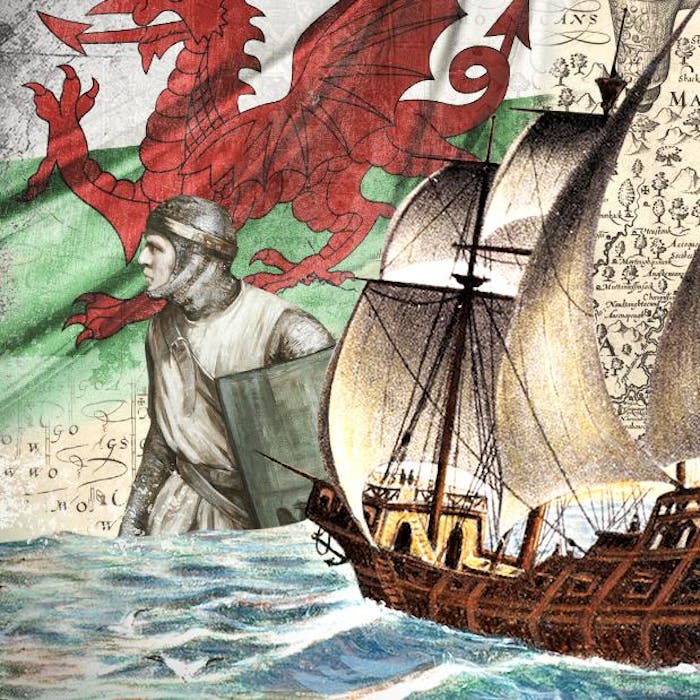
Did a Welsh prince discover America?
Whilst it was generally believed that Columbus was the first European to discover America in 1492, it is now well known that Viking explorers reached parts of the east coast of Canada around 1100. What is less well known is that a Welshman may have followed in their footsteps, this time bringing settlers with him to Mobile Bay in modern day Alabama.
According to Welsh legend, that man was Prince Madoc (or Madog) ab Owain Gwynedd.
A Welsh poem of the 15th century tells how Prince Madoc sailed away in 10 ships and discovered America.
Owain Gwynedd, king of Gwynedd in the 12th century, had nineteen children, only six of whom were legitimate. Madog (Madoc), one of the illegitimate sons, was born at Dolwyddelan Castle in the Lledr valley between Betws-y-Coed and Blaenau Ffestiniog. When the King died in 1169, there was such a ferocious battle for the throne between the siblings that Prince Madoc and his brother decided to leave them to it and search for pastures new - setting sail with two ships in 1170. They sailed west and are said to have landed in what is now Alabama in the USA.
Prince Madoc then returned to Wales with great tales of his adventures and persuaded others to return to America with him. They sailed from Lundy Island in 1171, but were never heard of again.
This piece of folklore was used by Queen Elizabeth I (of the Welsh Tudor dynasty) as evidence to the British claim to America during its territorial struggles with Spain.
It is said that early explorers and pioneers found evidence of possible Welsh influence among the native tribes of America along the Tennessee and Missouri Rivers. In the 18th century one local tribe was discovered that seemed different to all the others that had been encountered before. Called the Mandans, this tribe were described as white men with forts, towns and permanent villages laid out in streets and squares. They claimed ancestry with the Welsh and spoke a language remarkably similar to it. Instead of canoes, Mandans fished from coracles, an ancient type of boat still found in Wales today. In addition, in 1799 Governor John Sevier of Tennessee wrote a report in which he mentioned the discovery of six skeletons encased in brass armour bearing the Welsh coat of arms.
George Catlin, a 19th century painter who spent eight years living among various native American tribes including the Mandans, declared that he had uncovered the descendants of Prince Madoc’s expedition. He speculated that the Welshmen had lived among the Mandans for generations, intermarrying until their two cultures became virtually indistinguishable. Some later investigators supported his theory, noting that the Welsh and Mandan languages were so similar that the Mandans easily responded when spoken to in Welsh.
The Mandan people were much reduced in number in the early 1800s by smallpox but still exist to this day.
As for Prince Madoc, no conclusive archaeological proof of such a man or his voyages has been found in the New or Old World so far.
Further reading
Links to external websites are not maintained by Bite Sized Britain. They are provided to give users access to additional information. Bite Sized Britain is not responsible for the content of these external websites.
